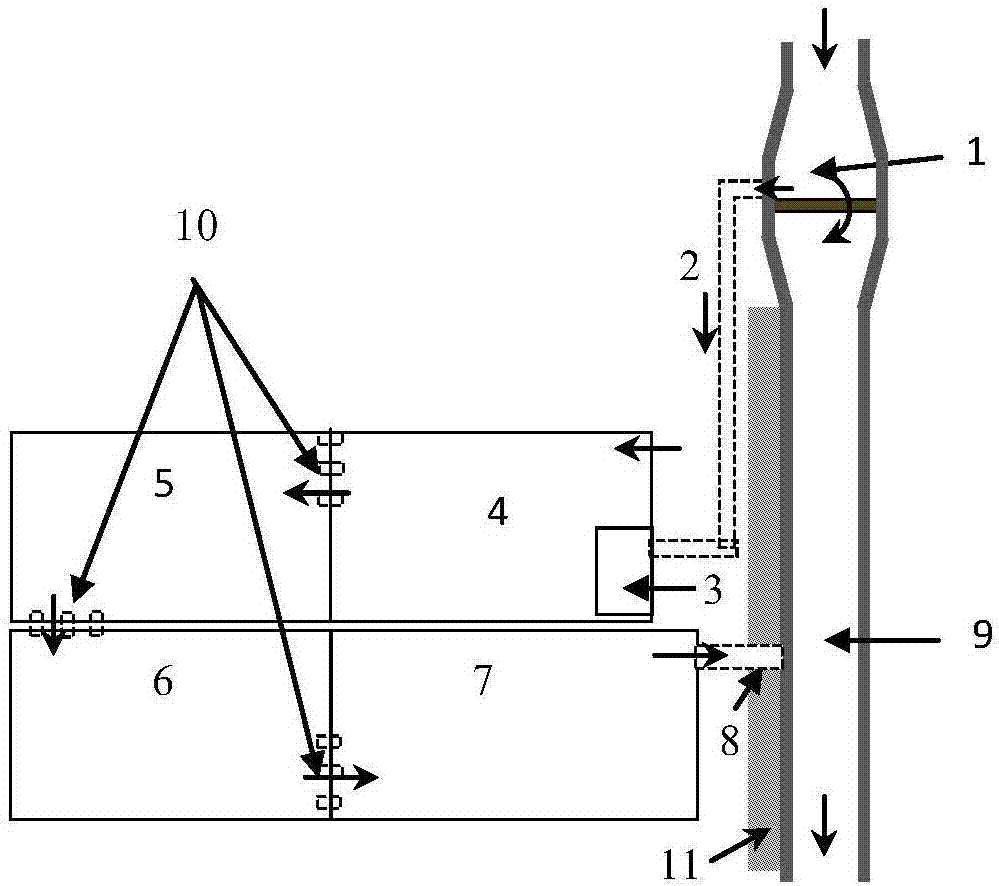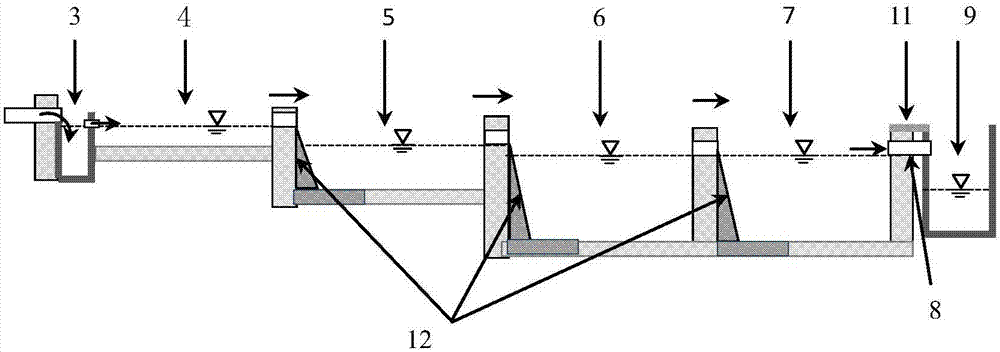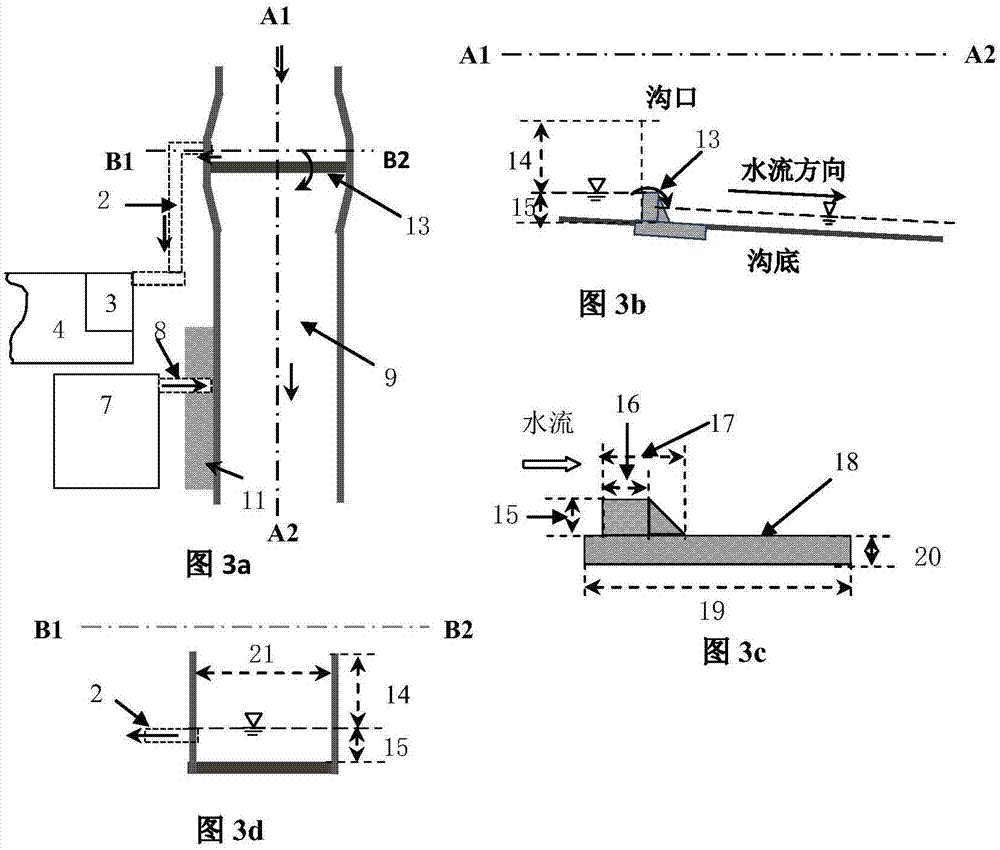Method and system for treating agricultural non-point source pollutants in hilly area by multilevel wetlands
A technology of pollutants and wetlands, applied in the field of agricultural environment, can solve problems such as high cost of treatment, poor sustainability, and few economic benefits of environmental treatment
- Summary
- Abstract
- Description
- Claims
- Application Information
AI Technical Summary
Problems solved by technology
Method used
Image
Examples
Embodiment 1
[0055] A method for multi-stage wetland processing of agricultural non-point source pollutants in hilly areas, the steps are:
[0056] A. Design and construction of multi-level wetland: select catchment area of 1.5-2.5km 2 , the proportion of farmland area is 30-35%, there is a small amount (3 For small watersheds or catchment areas below 1 day, select a lowland with a certain drop (including paddy fields, ponds, natural wetlands, etc.) -5 level) Ecological wetlands; set water retaining sills on the main drainage ditches suitable for constructing ecological wetlands near the outlet of small watersheds or catchment areas, and build diversion facilities to guide the ditch drainage into the ecological wetland system on the side; plant aquatic plants in the wetlands , put a small amount of eel and loach in a shallow water wetland of 20-30cm at the front end (15-20kg / mu for eel seedlings with a tail weight of 40-50g, 10kg / mu for loach seedlings with a tail weight of 5-10g), and 5...
Embodiment 2
[0072] A method for multi-level wetland treatment of agricultural non-point source pollutants in hilly areas (1.5-2.5km from Changsha County, Hunan Province 2 Non-point source pollutants in watersheds as an example), it includes the following steps:
[0073] A. Build diversion facilities on the main drainage ditch of the catchment area: during the dry season (November-December), construct diversion facilities on the main drainage ditch of the catchment area, and increase the drainage ditch of the raw stone masonry slope protection from the original upper mouth to a width of 1.5m The widening is 2.0m, and the length of the widening part is 2.5m. A water retaining ridge is built at the bottom of the ditch with a height of 40cm. A diversion pipe is built on the side with a diameter of 20cm to guide the drainage of the ditch into the multi-level ecological wetland.
[0074] B. Build a grit chamber and a third-level ecological wetland at the water inlet of the first-level wetland: ...
Embodiment 3
[0081] according to figure 1 , figure 2 , image 3 , Figure 4It can be seen that a multi-level wetland system for treating agricultural non-point source pollutants in hilly areas consists of a diversion facility 1, a diversion dark tank / pipe 2, a grit chamber 3, a first-level wetland 4, a second-level wetland 5, and a third-level wetland 6. Fourth-level wetland 7. Wetland main drainage outlet 8. Drainage ditch 9. Overflow tank 10. Road between the final wetland and drainage ditch 11. Water drop ridge 12. Water-retaining ridge 13. Water-retaining ridge 19 , stepping 25 between the troughs, and the anti-scouring sill 24 of the drop sill, the connection relationship is: the diversion facility 1 is connected to the grit chamber 3 through the diversion dark groove / pipe 2, and the grit chamber 3 is connected to the primary wetland 4, The third-level wetland 6 is connected to the second-level wetland 5 and the fourth-level wetland 7 through the overflow tank 10, the wetland main...
PUM
| Property | Measurement | Unit |
|---|---|---|
| thickness | aaaaa | aaaaa |
Abstract
Description
Claims
Application Information
 Login to View More
Login to View More - R&D
- Intellectual Property
- Life Sciences
- Materials
- Tech Scout
- Unparalleled Data Quality
- Higher Quality Content
- 60% Fewer Hallucinations
Browse by: Latest US Patents, China's latest patents, Technical Efficacy Thesaurus, Application Domain, Technology Topic, Popular Technical Reports.
© 2025 PatSnap. All rights reserved.Legal|Privacy policy|Modern Slavery Act Transparency Statement|Sitemap|About US| Contact US: help@patsnap.com



